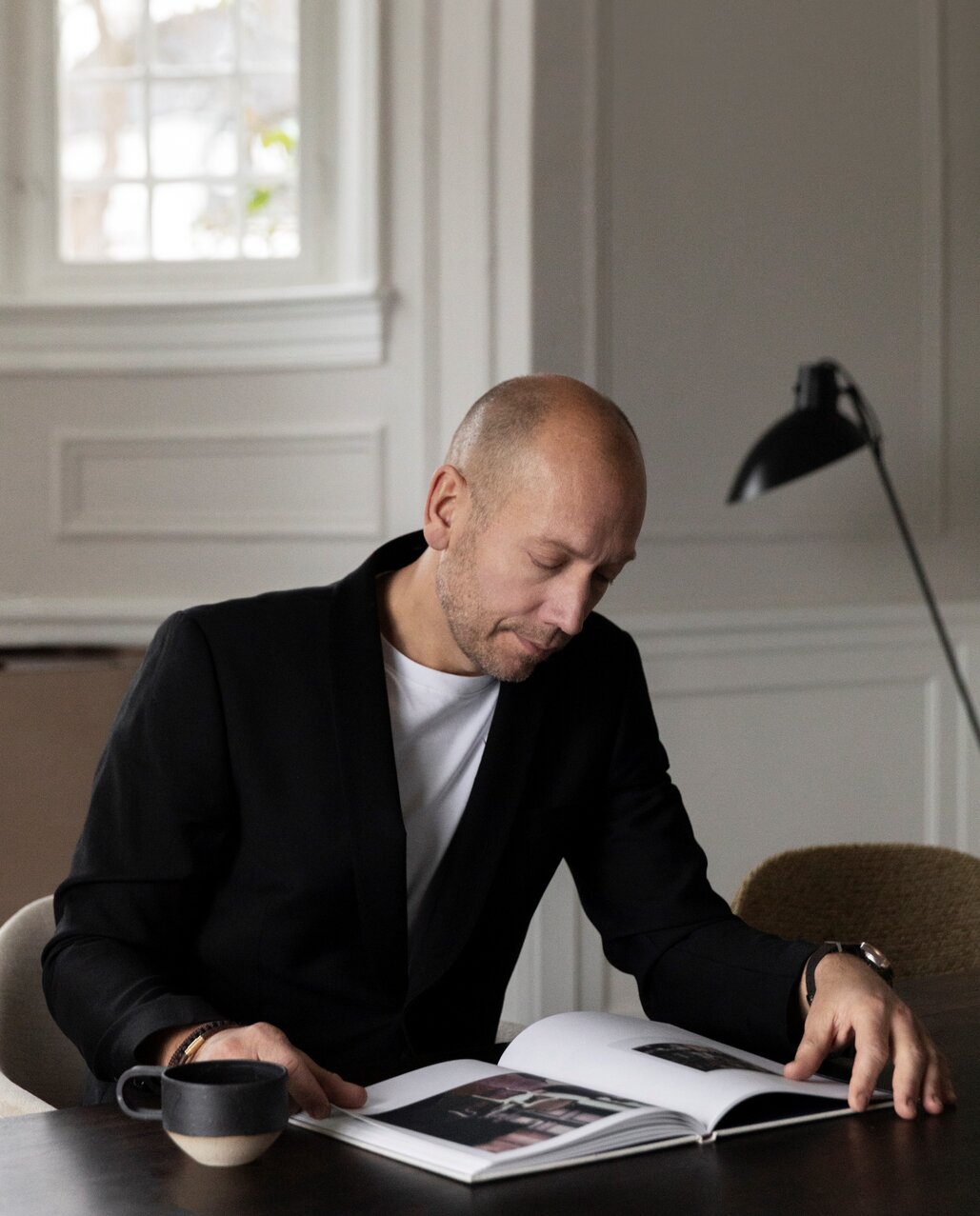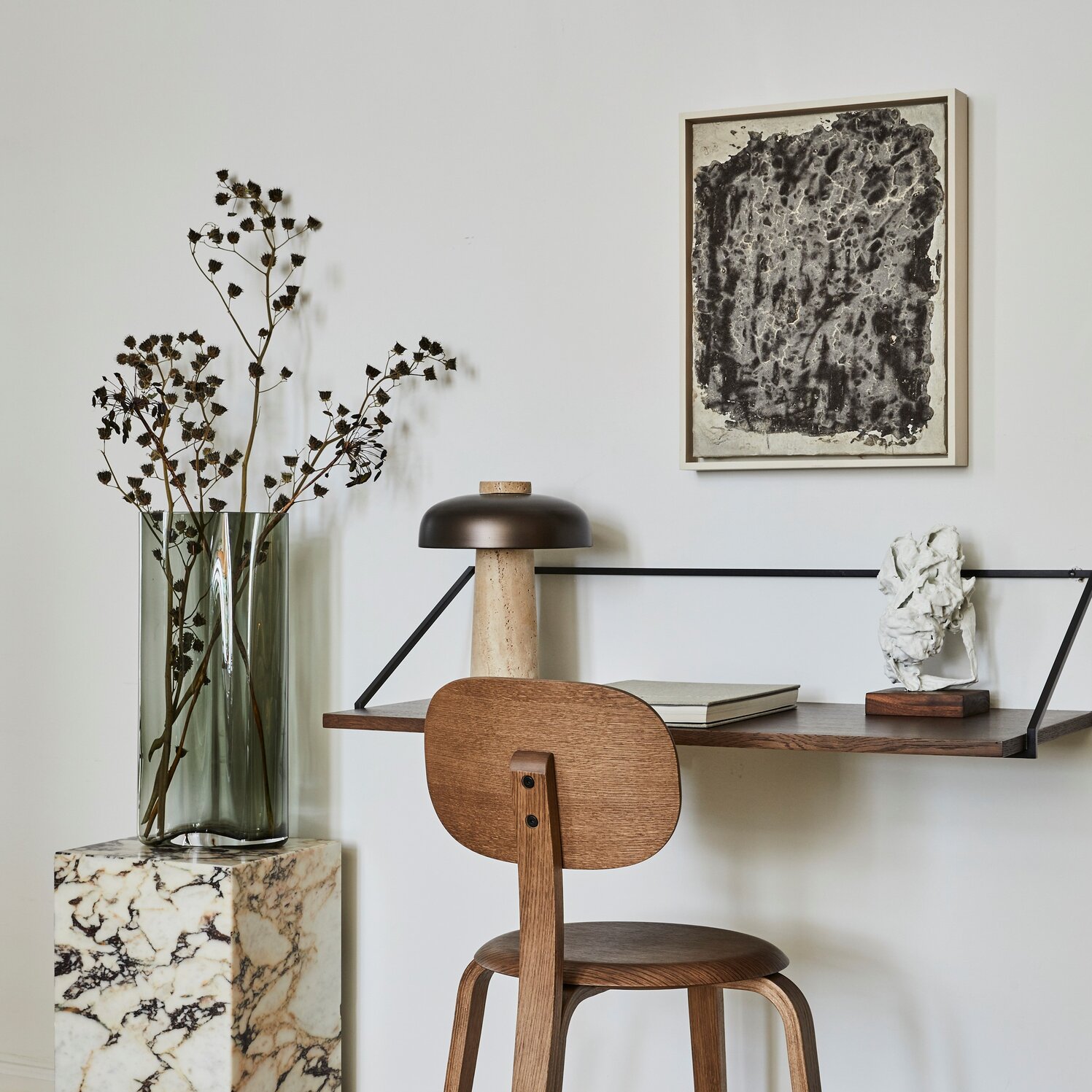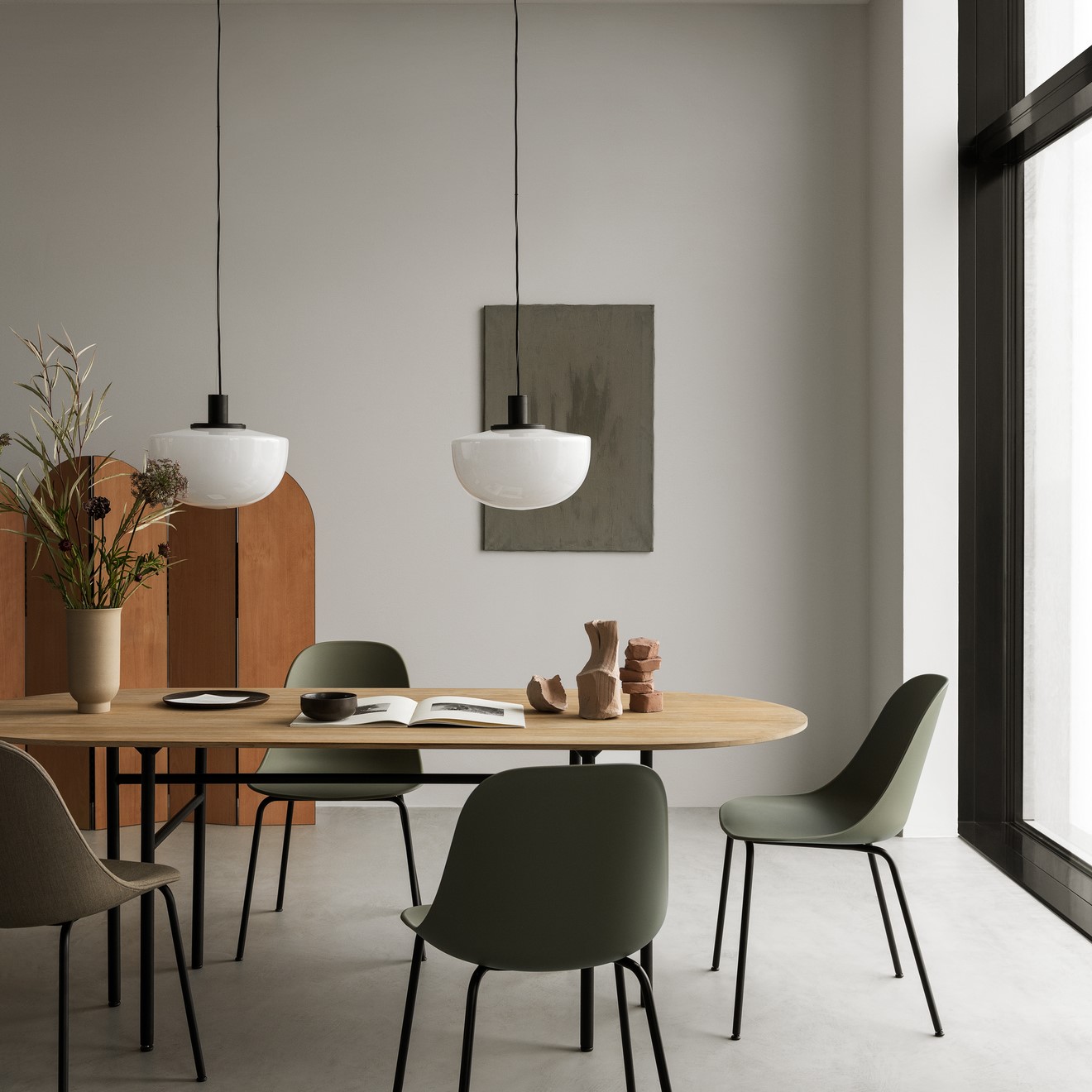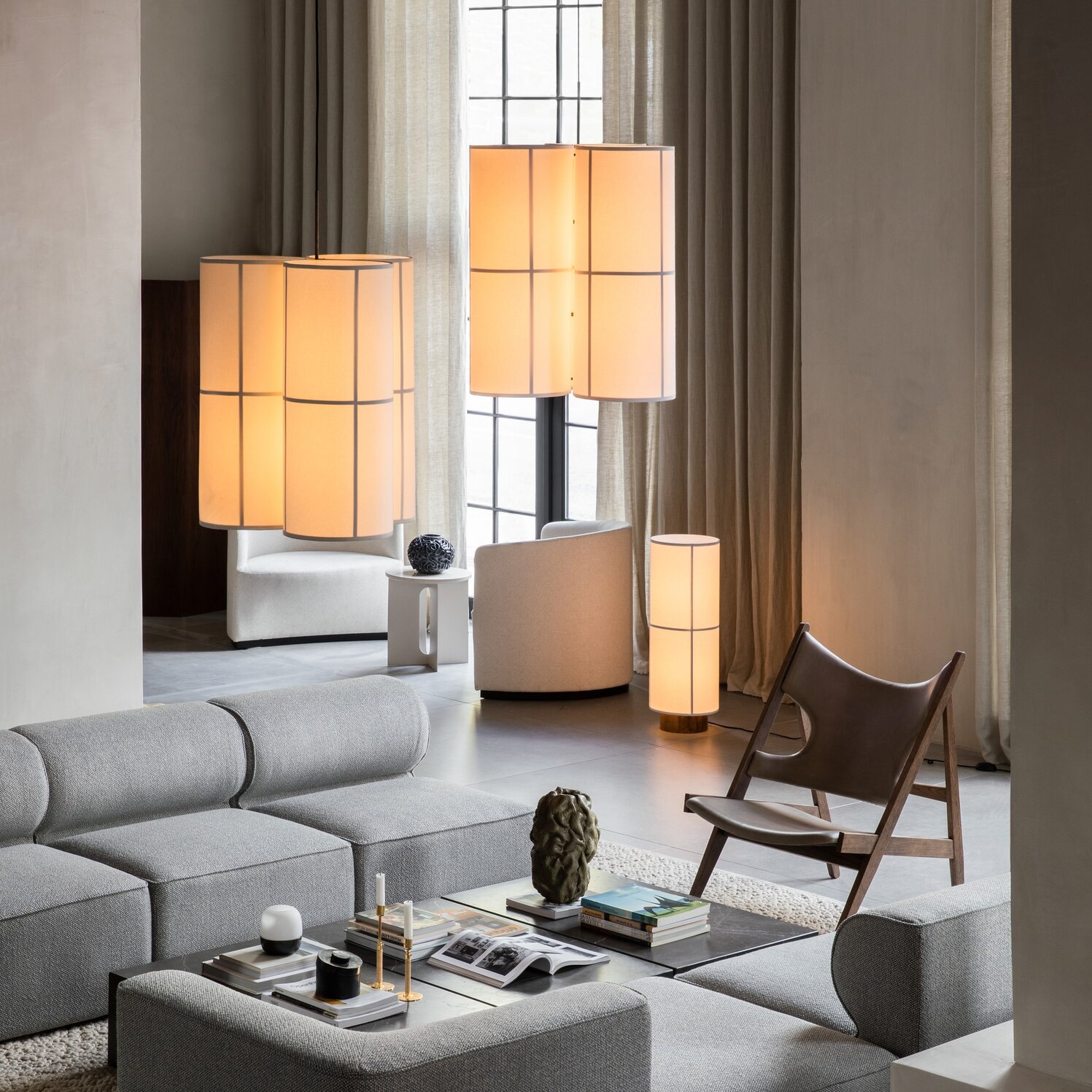In this interview, we meet with Jonas Bjerre from Norm Architects. The design studio stands behind some of MENU's most popular models. We had a talk with Jonas Bjerre about his relationship with design and how he works with light - both as a designer and as a photographer.

Photo: Jonas Bjerre / Norm Architects
In addition to his knowledge as a designer, Jonas Bjerre uses his experience as a photographer to understand how light affects a room and which challenges arise, when working with light. In this interview, Jonas Bjerre answers our design and his approach to lighting design.
What do light and design mean to you?
"Light is essential for both design and architecture. Without light, there is no space or form. So the work with both daylight and artificial light - and the interplay between them - is one of the most important elements in our practice.
In addition to working as an architect and designer, I work intensively as a photographer, where I get the possibility to study light in detail and how it affects form, space and moods. Some days, all I think about is light. The same applies to our work with materials and colors. Here, light is also important for how colors are perceived by the eye and how structures in materials are drawn. I love to talk about light because it is so essential for our quality of life"
"Light is essential for both design and architecture. Without light, there is no space or form“

Photo: MENU Reverse Table Lamp Brass
What do you find especially interesting with designer lighting, as opposed to other forms of design?
"Every genre within design has its own challenges, but the work with light is interesting because you need to combine the understanding of how a lamp stands in the room, in regards to scale, and how it is experienced as a sculptural form.
At the same time, you need to understand how the product casts and breaks light, as well as how it affects our perception of the room and lastly, which mood the lamp puts us in and which purpose it fulfils. So there are several parameters that need to connect with each other."
Which considerations do you have on the interplay between aesthetics and technical functions, when it comes to designer lighting?
"Great lamps only work, if aesthetics and technique connect perfectly. The quality of the light is just as essential as the quality of the form. If the lamp gives a poor light but looks nice, it is reduced to a sculpture and if it is ugly, it's not even considered. But it is definitely a puzzle to make everything work and it demands an understanding of the technical aspects. Especially right now, where light sources are developing so quickly.
I've been struggling a lot with the quality of the light from all of the new light sources and I still think many of them have their issues in regards of color rendering, dimming etc. So it is a never-ending battle to get the right light into the lamps."

Photo: MENU Bank Pendant Opal
When is light and design especially important to you, in your everyday life?
"I feel that light is important from the moment I wake up till the moment I go to bed. When I wake up, I want to wake up to dim light, so my eyes can slowly adjust to the sharpness of daylight. The same is applicable when going to bed and I can feel how the blue light from screens affect my sleep cycle. In the transition from light to dark, in "the blue hour", lighting is very difficult and you need to turn up your lamps and have a strong light. When evening comes, it's important to dim the light and make it warmer. Here, in the North, the warm light is essential for cosiness inside, as opposed to in the South, where outside lighting is important since life is lived outside.
I have a long-range of lighting scenarios and I constantly run around, dimming all of my lamps. Both in private interiors and in our commercial projects, it is indisputable for me that every lamp should be dimmed individually."
What does the quality of the light mean to you?
"Rays of light affect our well-being on many levels. Not just in the way the light is filtered through our eyes and perceived by our brain, but also in the way that the skin and the body as an organism, is affected by the waves of light. Several studies have shown that light affects our mood, our health and our general well-being. A part of my trade as a designer and architect is about understanding these effects and the technical elements of lighting, in order to create moods that give the best conditions for nice moments - with a book on the couch, the good restaurant experience, the great home office and ultimately, the good life."

Photo: MENU Socket Occasional Table Lamp
Can you mention some of the most typical mistakes that people make, when decorating with designer lighting?
"There are a lot of mistakes to make and I know this because I've made many of them myself. A lot of people have way too few light sources to define the room properly. They don't illuminate the corners of the room.
Also, most people don't consider the strength or the color of the light and often end up getting too cold, dark or warm areas of light. Here, it's crucial to understand how to work with light intensity, tone and color rendering. And it's not just the light source you should consider, but also the material and colors on the lamp that can affect the light. For example, there's a difference in the way light is filtered through a blank or a matte opal glass shade. If the light is reflected in a brass shade, the light becomes unbearably yellow. If the light cannot be dimmed, where the color temperature falls along with the intensity, the lamp can't really be used throughout the whole day. Finally, if the light is not angled correctly in the room, a lamp can make a room feel repulsive. I could go on. There are so many pitfalls."

Photo: MENU Hashira Cluster Pendant / MENU Hashira Floor Lamp
How does one most effectively utilize light, when decorating their home?
"You will often need every corner and surface of a room to be lit, so it gets defined properly and there are no dark corners that fall into the shadows and seem dead in the room. It's also a good idea to work with either diffused light that spreads in the entire room or light that points downwards. I often think that light pointing upwards, seems too monumental and it's not nice to be around. You can use upwards-facing light in other settings. It's also a good idea to work with reflected light, where light is cast upon the walls, so only the reflected light is experienced. This offers a softer setting and it's really nice to only see the effect of the light and not the light source itself. It can also be nice to work with a combination of built-in architectural lighting and designer lamps. To create enough light with free-standing lamps alone, you principally have to have a lot of lamps - and this will quickly result in a crowded interior."
Can you share something that you do in your everyday life that clearly shows that you work with light and design on a daily basis?
"I always turn up the light to full power in the entire house in "the blue hour" and then I dim it back down, once darkness has fallen. So I have 2 daily rounds with an hour in between in the entire house. Light is essential for me and life is too short for bad lighting"
Explore MENU's designs here.












